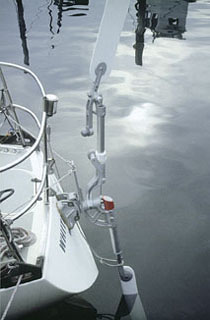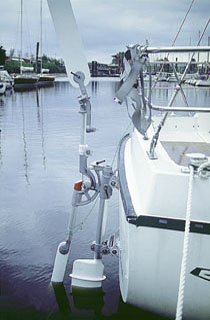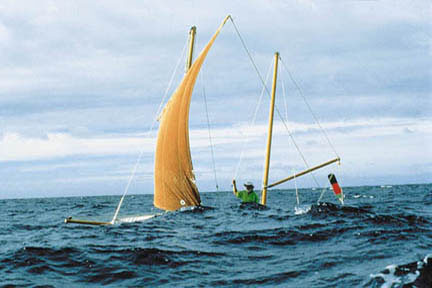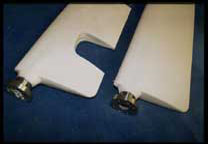| WINDPILOT has been involved in basic research since its creation in 1968 and has investigated, built, tested and tweaked all the known types of windvane steering system. Those that proved effective in practice were then put into production as a robust and simple to operate self-steering option.
We have never taken our foot off the pedal. While other manufacturers are still happy to carry on selling systems that have hardly changed since they were first developed 20 or even 30 years ago, we are always on the hunt for new ways to improve the WINDPILOT range. Here is an introduction to the major innovations we have made in the years since 1985. |
|||||
1985 The First InnovationWINDPILOT's innovative edge really began to emerge in 1985, when Peter Förthmann first had the idea of designing a servo-pendulum unit that could also be used with a double rudder system. The quality of steering provided by a servo-pendulum system depends primarily on how effectively the force from the pendulum arm is transmitted to the rudder: faced with ever larger boats and the growing popularity of wheel steering and centre cockpits for bluewater use, conventional servo-pendulum systems were reaching their limits. A simple auxiliary rudder system (without servo assistance), while avoiding the problem of force transmission, just could not be made to generate the power required to deliver satisfactory steering on anything larger than about 38 feet. Thus the scene was set for the logical next step in windvane design: it was time to marry the power of a servo-pendulum system with the benefits of a main-rudder-independent auxiliary rudder. The Pacific and Pacific Plus twins are modular systems offering an almost infinite variety of installation options and universal mounting components to meet the requirements of just about every boat and skipper. |
|||||
 |
 |
||||
 |
|||||
1997 The Second InnovationThe first model from WINDPILOT's design team of Jörg Kusserow and Peter Förthmann to be developed on a CAD workstation was the Pacific Light. Conceived especially for use on smaller boats (up to 27ft/8.5m), the Pacific Light manages to reproduce the principal technical features of its larger sisters in a package that at just 13kg/28lbs has the distinction of being the world's lightest windvane steering system. It was a Pacific Light that steered German adventurer Burghard Pieske's 7m Bounty Bay on his extraordinary voyage across the Pacific in the wake of Captain Bligh. |
|||||
 |
 |
 |
|||
1998 The Third InnovationAfter 13 years on the production line the Pacific and Pacific Plus came up for a fundamental overhaul in 1997/98. The changes were necessary in the main in order to incorporate what had been learned from the several thousand systems in use and to make the most of new production opportunities. Like their smaller stablemate the Pacific Light, the new systems were designed on WINDPILOT's CAD workstation. |
|||||
 |
 |
||||
2000 The Fourth InnovationWINDPILOT built its auxiliary rudder blades using conventional GRP technology for 32 years. Eventually, however, we discovered a better alternative and in spring 2000 we introduced a world first rotational moulding process using a core of PE foam. |
|||||
